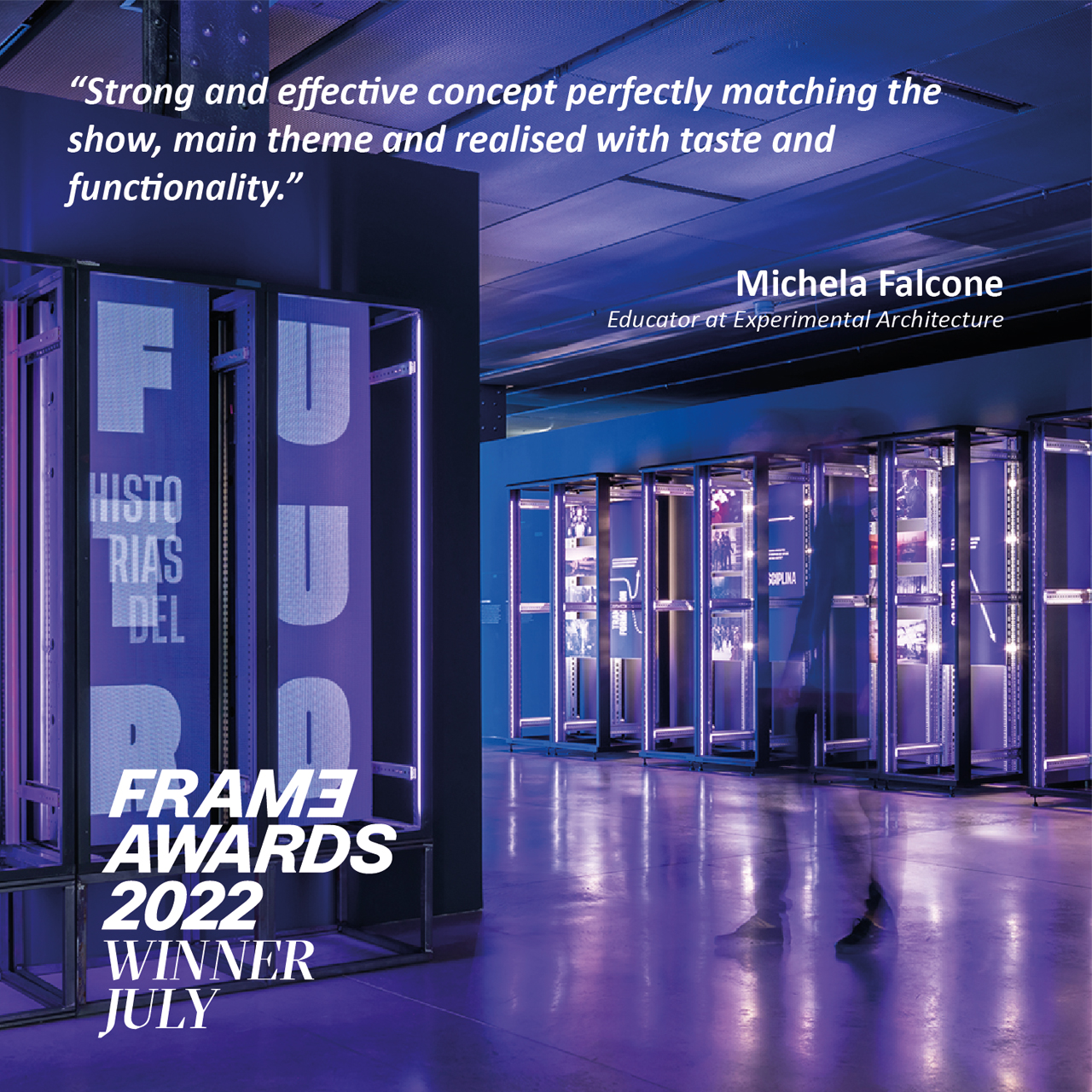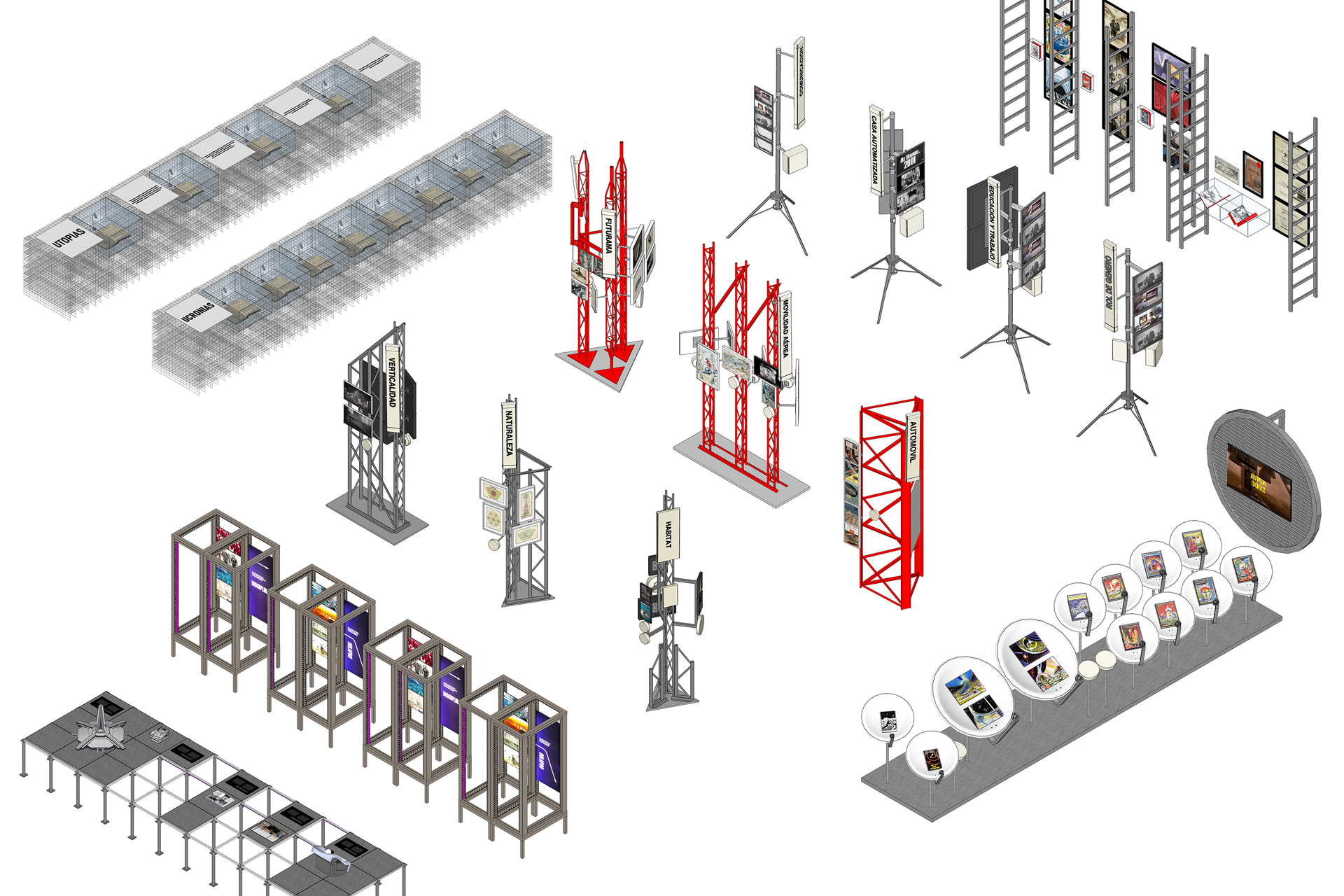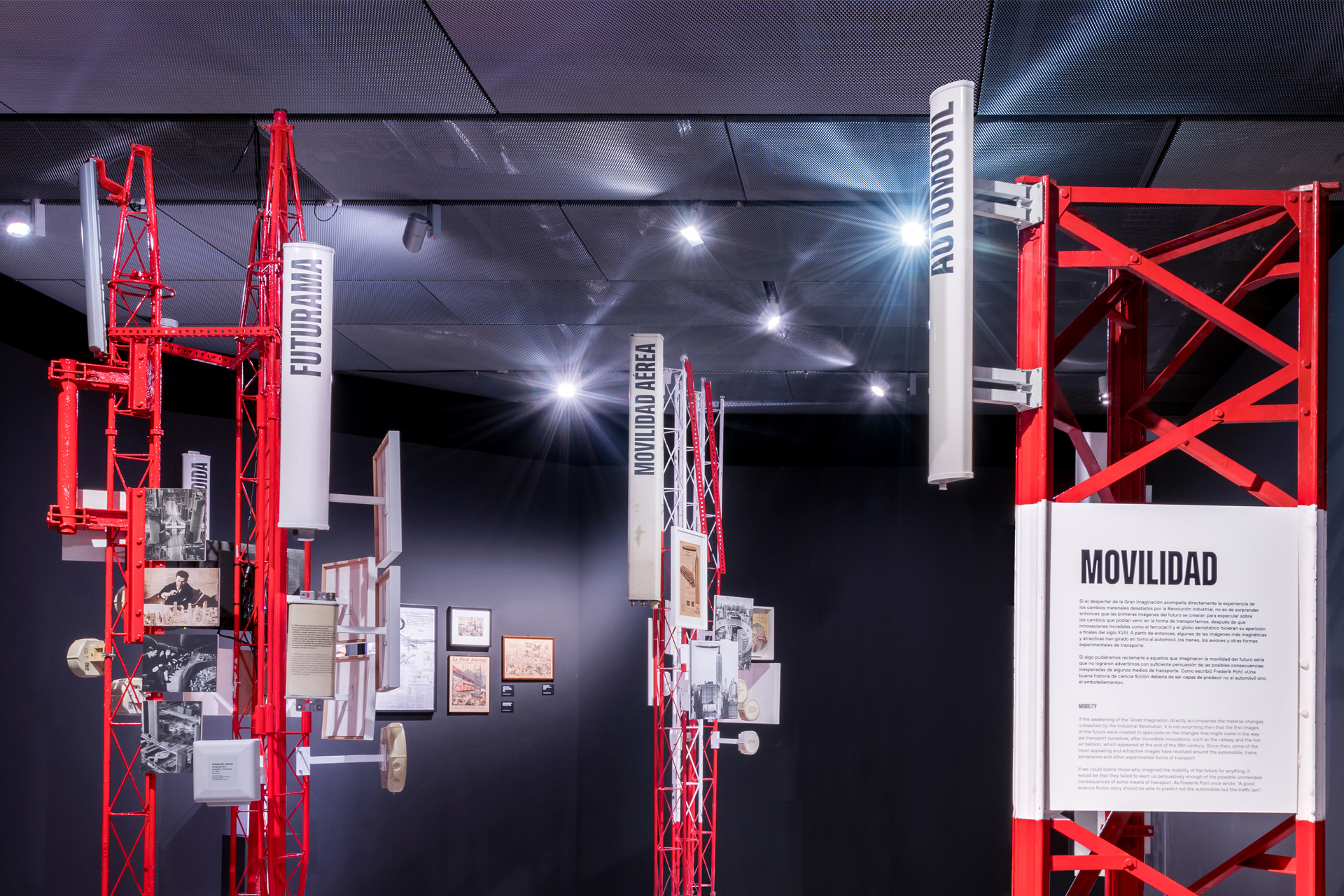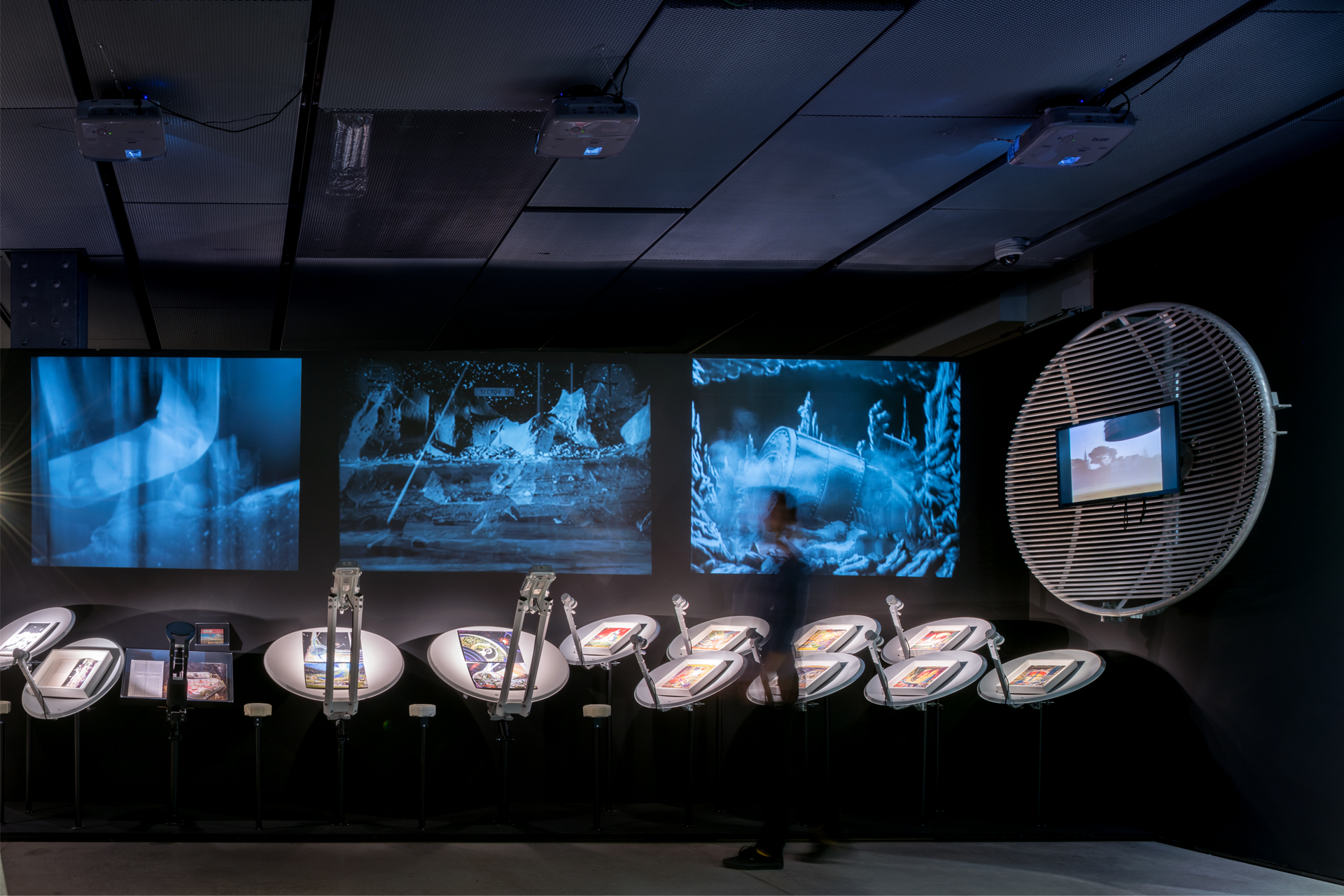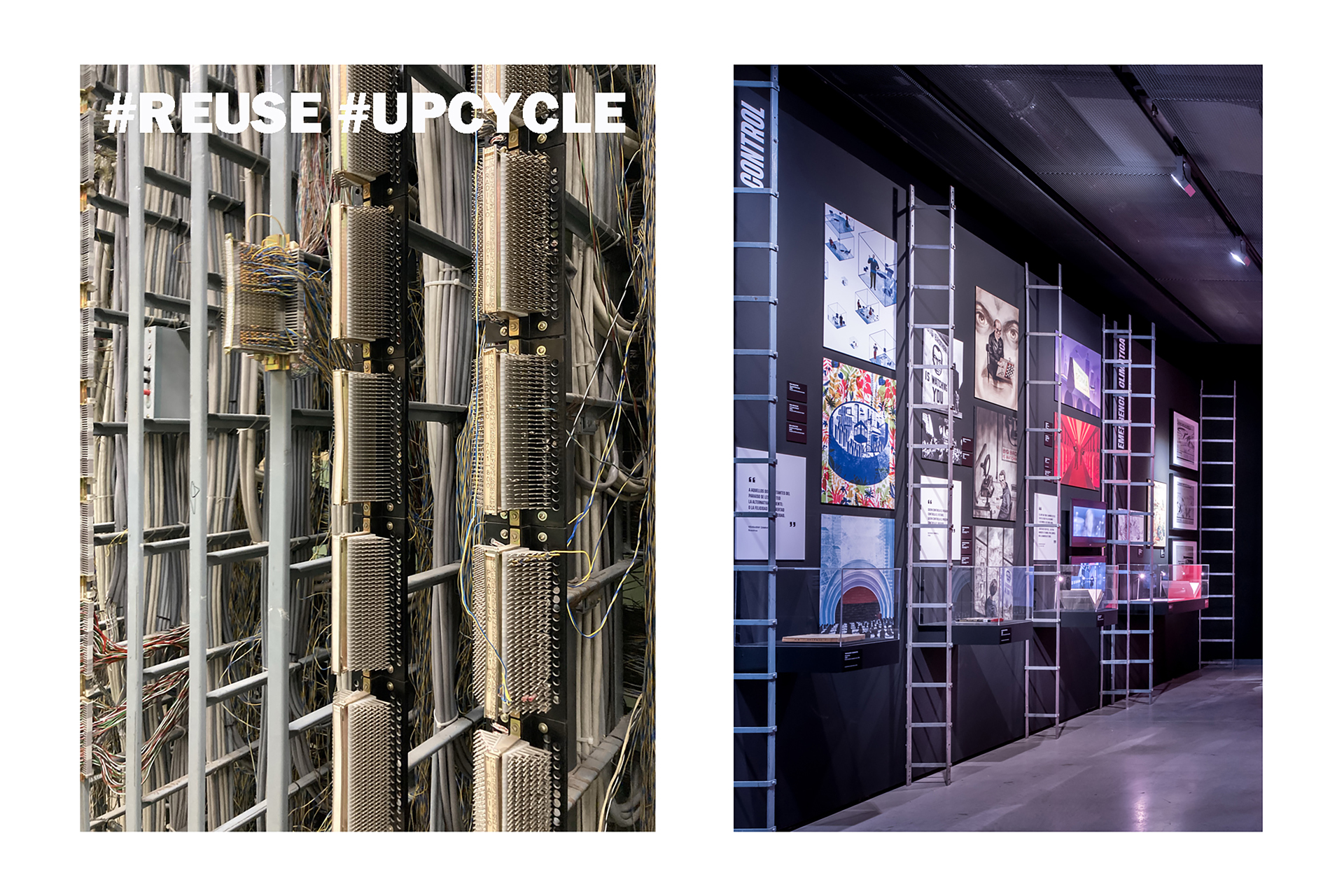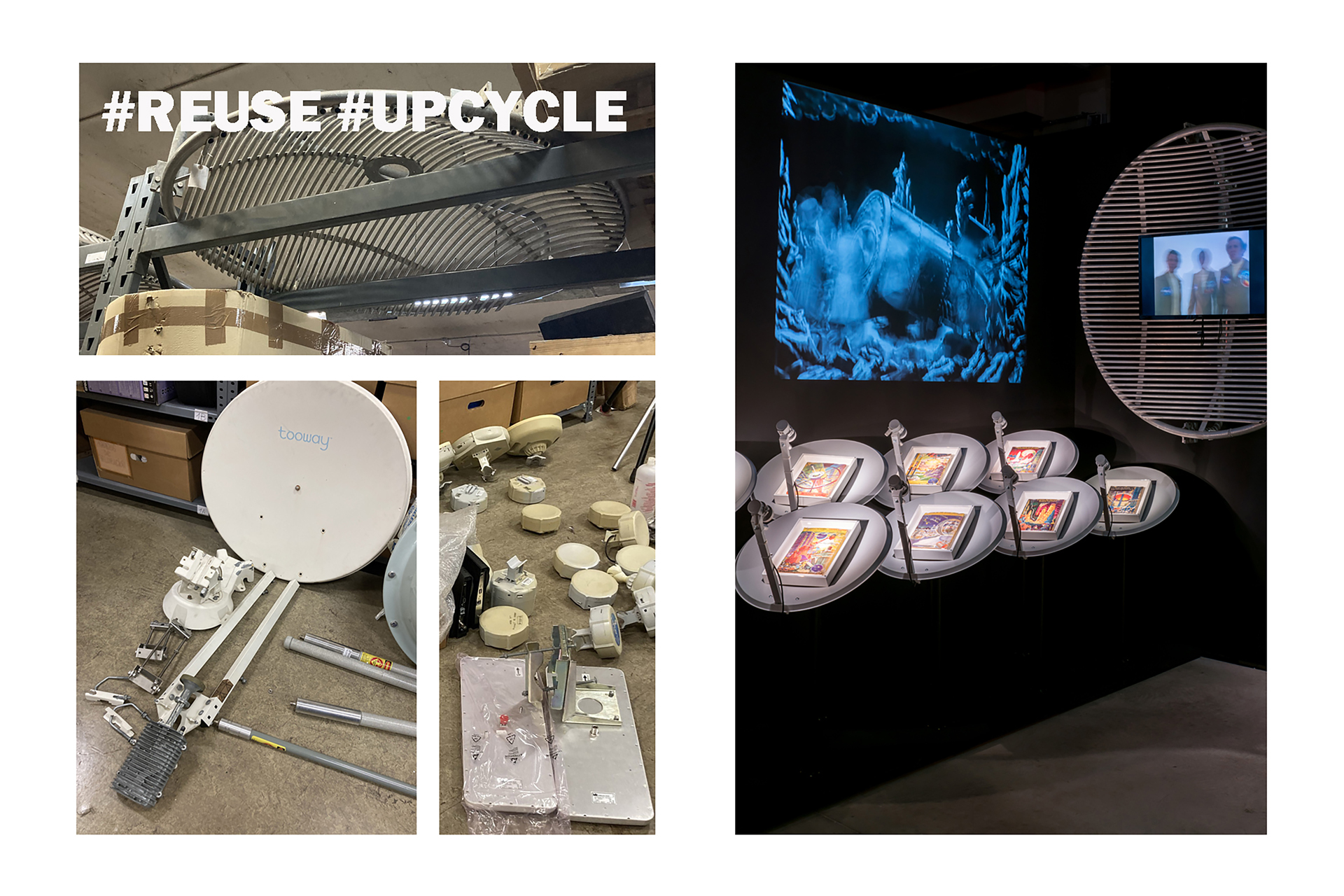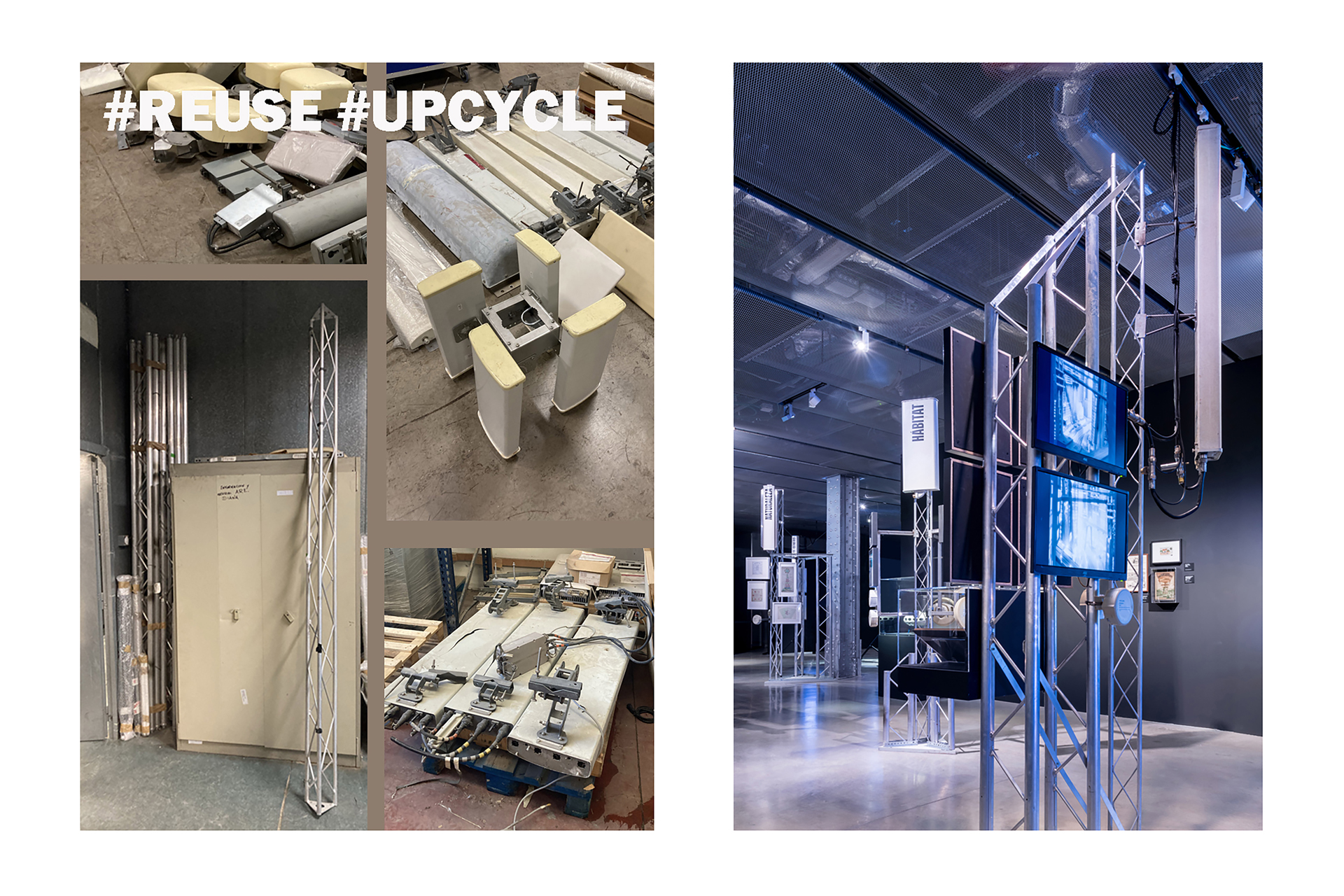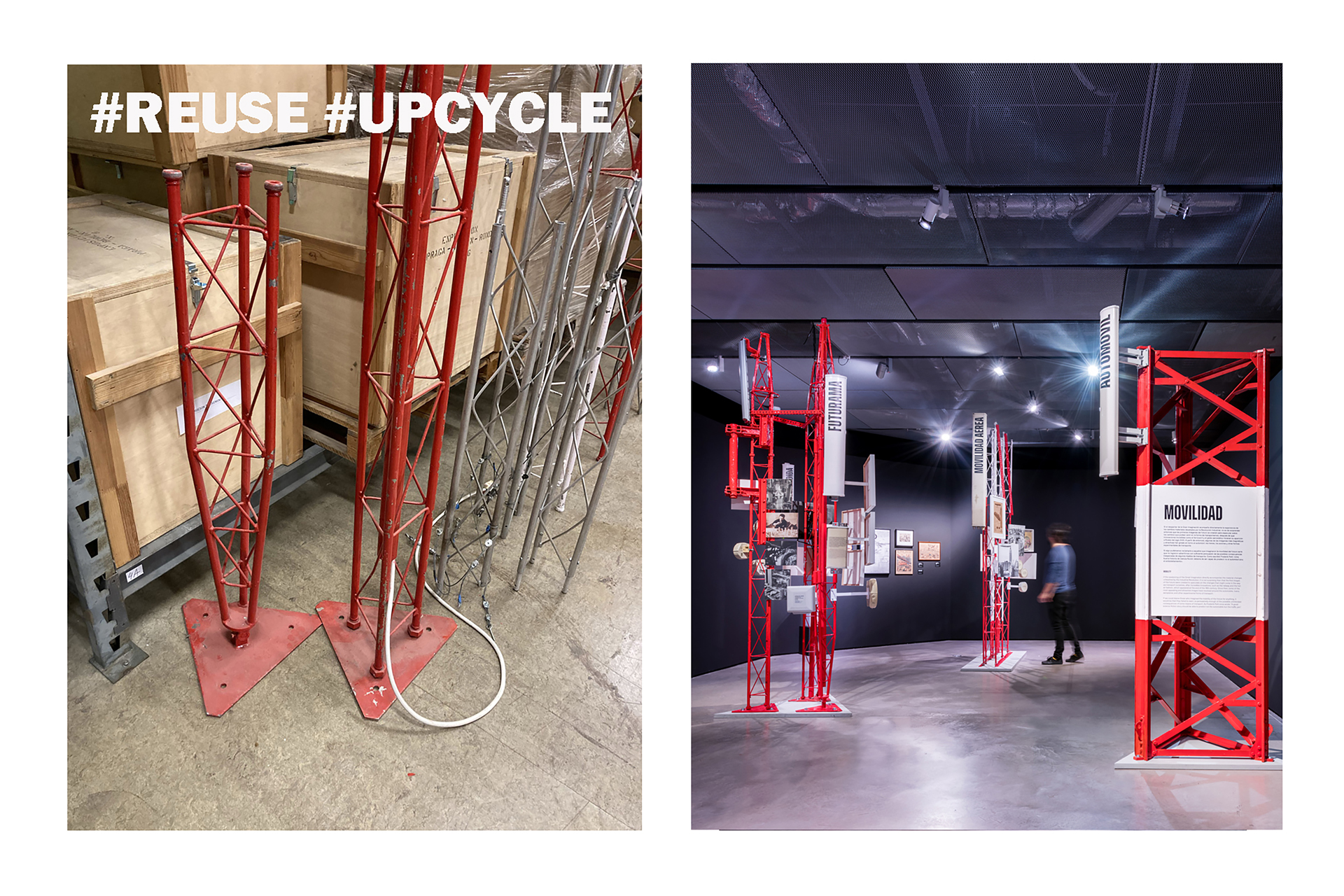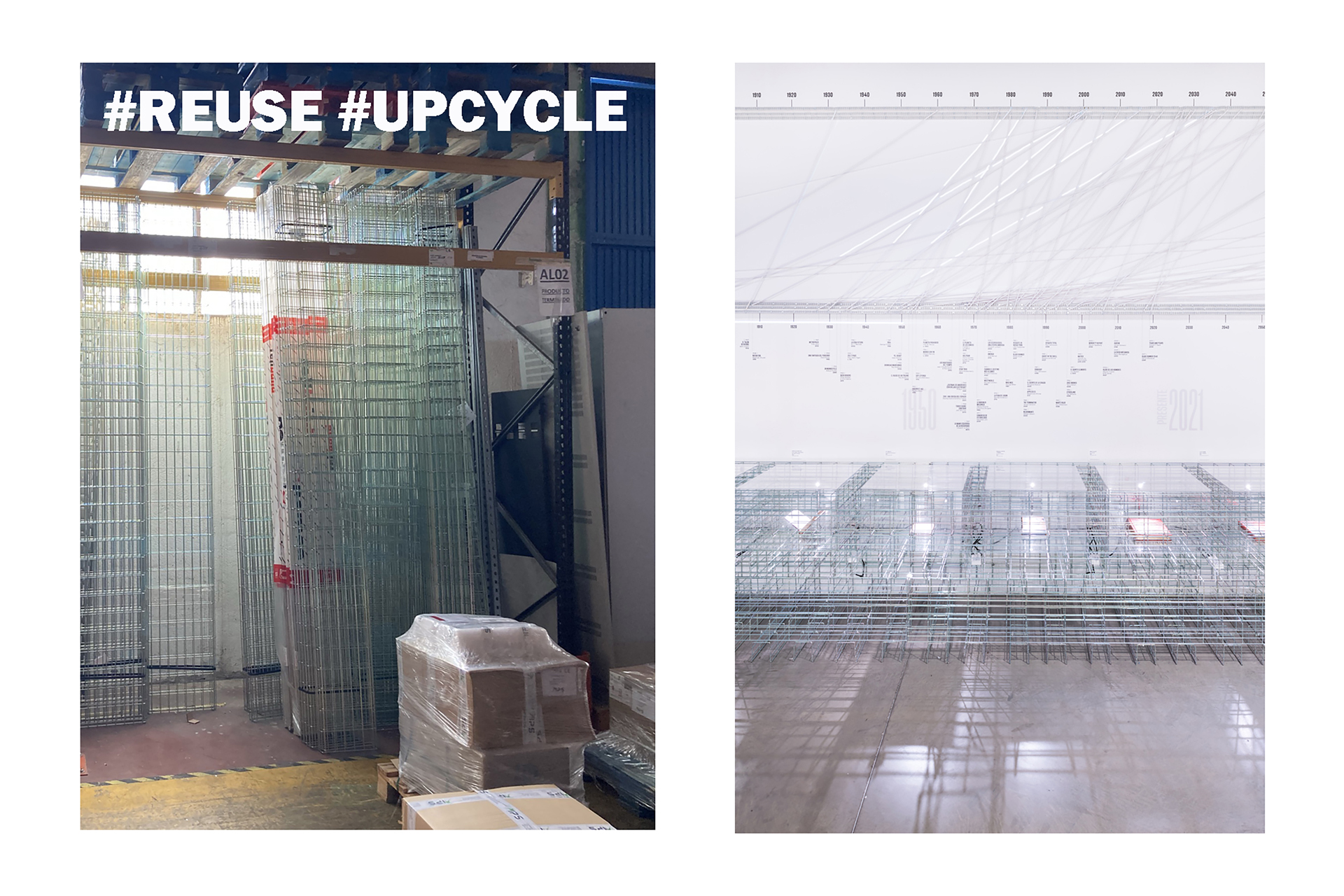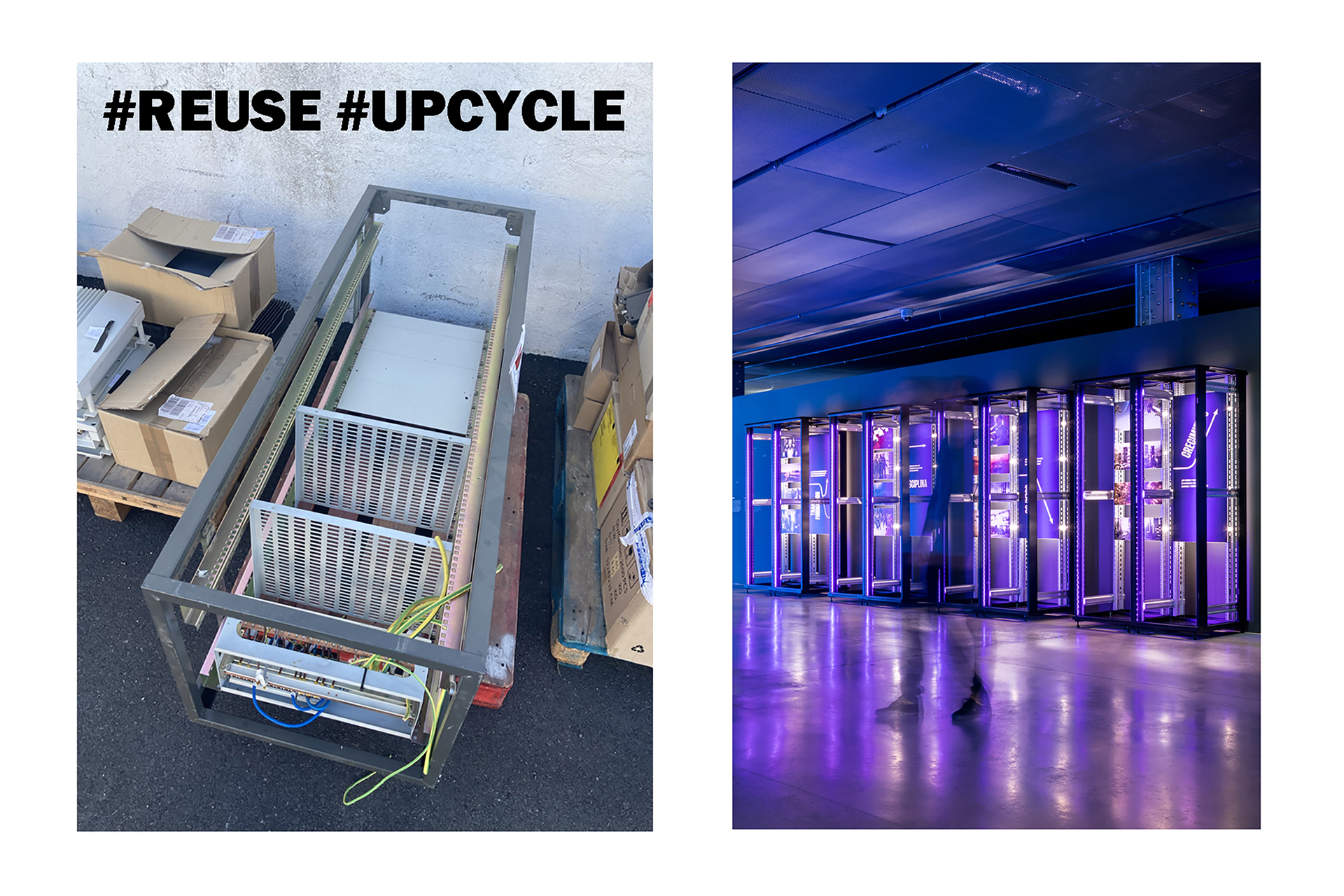One of the main advantages of the materials used to make the displays is that they have come from environments requiring a high level of resistance; industrial settings or exposed to the elements.
The displays were also built by means of the mechanical assembly of multiple independent pieces. They are therefore easy to disassemble, store and transport, making it possible to move the exhibition from one place to another.
The contents can in turn be adapted to any of the supports, since the same kind of arm is used to hold them in all cases, which would allow the pieces on display to be readapted without affecting the display cases in accordance with space requirements or changes in content at future venues.
The strategy focused on Reuse and Upgrading; trying to make the visitor think about obsolescence and questioning the design process through the inversion of standard stages.
Reusing obsolete devices and transforming them into useful displays was the strategy implemented to reduce production requirements, and therefore, the consumption of unnecessary materials. Their original state was maintained, including damage in some cases, to show visitors that something officially obsolete can acquire a second and meaningful life; a way to demand different approaches to Circular Economy processes.
